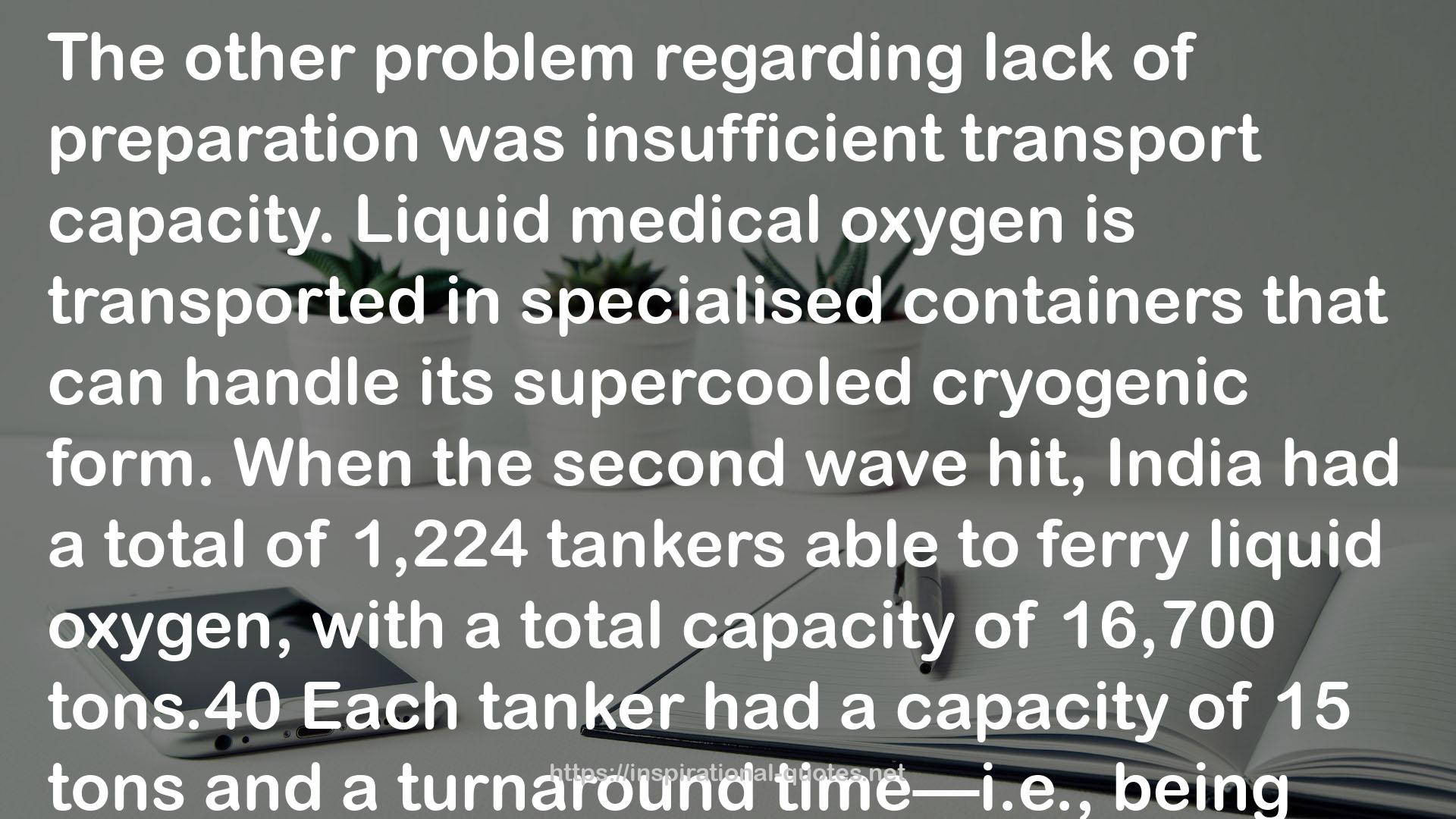" The other problem regarding lack of preparation was insufficient
transport capacity. Liquid medical oxygen is transported in
specialised containers that can handle its supercooled cryogenic
form. When the second wave hit, India had a total of 1,224 tankers
able to ferry liquid oxygen, with a total capacity of 16,700 tons.40
Each tanker had a capacity of 15 tons and a turnaround time—i.e.,
being filled, transported, unloaded and then returning to be filled
again—of about six days. This was inevitable because some states,
like Delhi, did not produce any oxygen. And so the total amount that
could be delivered on average daily was not the production capacity
of 9,000 tons but 2,700 tons—less than half of what just Delhi,
Gujarat, Karnataka and Maharashtra alone required. The result
could only be a gross shortfall of what was needed across the
country. And when that happened, Indians began to die from a lack
of oxygen. The first deaths from a lack of oxygen had actually come
during the first wave. In May 2020, it was already known that a
surging wave caused deaths because normally functioning hospitals
could rapidly run short of oxygen, a problem that had killed several
patients in Mumbai that month.41
Aditi Priya, a research associate at Krea University, compiled
the instances of oxygen deaths in the second wave that were
reported in the media. The Modi government itself produced no
document on the shortage or what it had wrought. "
― , Price of the Modi Years
